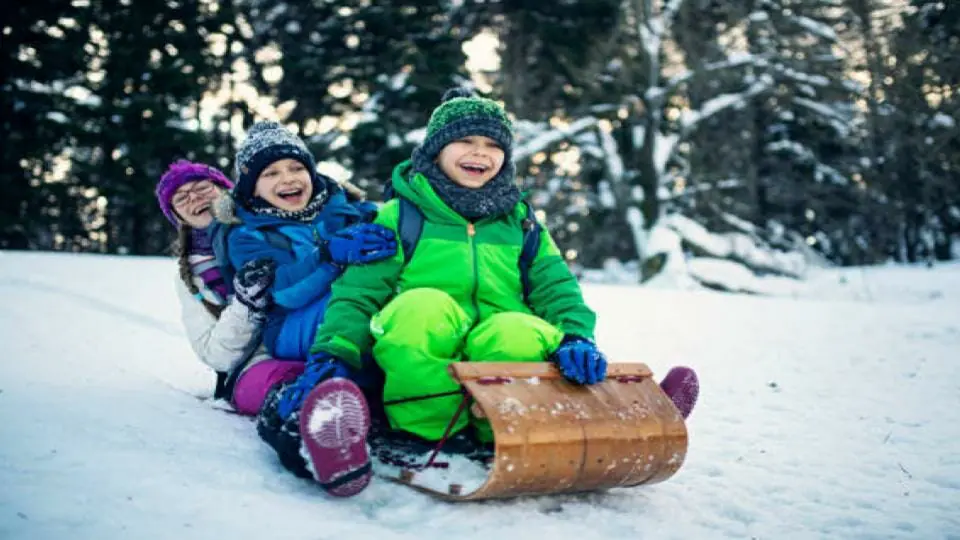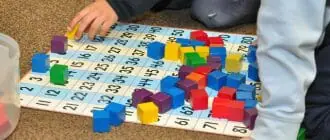Hello again! I hope everybody is doing well. Today let’s talk about 31 great 3rd grade poems to read to your students. I think your students will enjoy the more advanced concepts, figurative language, and vocabulary.
Poems in the classroom educate students on how to express themselves. Unfortunately, some young learners dislike reading and writing poems, but my goal is to persuade all of your students into loving poetry with these 3rd-grade poems!
While it’s been a difficult task to pick and choose, I’ve selected a collection of 31 charming, 3rd-grade poems that will both captivate and provoke discussion with your students. Read on to learn teachable lessons for each poem.
The Best Third Grade Poems – Top 31 Picks To Read In The Classroom

1. A Pleasant Ship by Emilie Poulsson
A Pleasant Ship starts with “I saw a ship a-sailing,/A-sailing on the sea,” and talks about mice and a captain who is a duck. This is one of third-grade poems that is also known as a nursery rhyme song, so I like to show my 3rd graders a YouTube video of the ship a-sailing and then discuss how songs are similar to poems, just with music!
2. Pretty Is That Pretty Does by Alice Cary
We learn about the plain brown dress the spider wears as she moves about her “silver house.” I like to start a conversation around the proverb and then talk about comparisons between a plain brown dress that the spider wears and whether that is pretty, her silver house, or her behavior.
3. Coasting Down the Hill by Anonymous

We are introduced to happy children enjoying sledding on a cold, snowy winter day. I like to talk about which words make them “see” the picture of the cold winter day. How do they know it’s cold? This is one of the best 3rd grade poems, and in this one, we touch on adjectives.
4. Which Way Does the Wind Blow? by Lucy Aikin
In “Which Way Does the Wind Blow?”, we can introduce a bit of science to watching the wind blow. This poem is great fun to teach about personification. We discuss how the wind becomes the main “character” and how he acts in the different seasons of the year and with this one, I’m sure you’ll end the class with happy children looking forward to the next one!
5. To a Child by William Wordsworth
Although this true service piece “To a Child” by William Wordsworth is short, it introduces some deep comprehension among students. I talk with the students about true service, the ways they’re asked to be helpful at school and home, and why it’s important.
6. The Sparrow by Anonymous

We learn about the little bird who comes to visit the reader every day in this fun poem of a sparrow. I like to play an imagination game where I ask students what they’d want to do if they could be this little bird for a day. For more exciting content to inspire students, check out our books for 3rd graders.
7. Birdie’s Morning Song by George Cooper
George Cooper introduces us to a very sleepy bird who just doesn’t want to get up and about their day! I then introduce the idea that maybe the “birdie” is a child, and the whole poem is a metaphor. That’s just one of the ideas, and maybe you can come up to play with yours!
8. Stopping by the Woods on a Snowy Evening by Robert Frost
In this philosophical poem, we sweep into the darkest evening of the year with them. This 3rd grade poem is excellent for discussion about imagery and responsibilities. I like to walk the kids through goal setting with this piece.
9. The Snowflake by Margaret E. Sangster

This is one of the most charming poems when we meet a little snowflake with a job to do. Here, we can discuss seasons, particularly winter. I like to pull up a video on YouTube that shows the crystalline structure of a little snowflake and how every one of them is different and special.
10. Cheerfulness by Marian Douglas
In this 3rd grade poem, we meet a little maiden named Cheerfulness. Together, the students and I list a range of emotions. Then, we act them out and see if the other students can guess.
11. My Flat Cat by Kenn Nesbitt
This is one of the funniest 3rd grade poems about a flat cat scooting under a bathroom mat and being squished by a Great Dane! It’s not a difficult task to ask the students about their dogs and cats. After some sharing about pets, we talk about rhyming in the poem.
12. Life Doesn’t Frighten Me by Maya Angelou

In this poem, the incomparable Maya Angelou talks about fire-breathing dragons and how she’s not scared of them at all. I’ll ask the students how we know the speaker isn’t afraid. Then we talk about things that the kids “used to” be afraid of but have learned how to overcome their fears-like being afraid of the dark or monsters under the bed.
13. The Eagle by Alfred Tennyson
While this is one of the shorter poems, it’s packed with imagery about the eagle. Hearing the eagle fall out of the sky is alarming. So I like to talk about how they hunt, how their wings and feathers work, and potentially conservation issues.
14. If Love Were Mine by Annette Wynne
In one of the most inspiring 3rd grade read alouds, we learn about the common toil of the speaker. There may be some new vocabulary words here, so we will discuss those. Then, I hand out modeling clay so they can “carve” out their pieces of artwork.
15. Dirty Face by Shel Silverstein
This is such a lovely little piece about the messiness and joy of childhood, including hugging a horrible dog and having ice cream. It beautifully encompasses the carefree child and how they’ll go exploring and live life to the fullest every day. After reading the poem, we discuss how we know the child has had so much fun.
16. Paul Revere’s Ride by Henry Wadsworth Longfellow
In this piece, we learn about Paul Revere’s midnight ride. It is one of the longer poems for 3rd graders, but it reads like an adventure story, so they stay with it. This poem usually leads into a bit of a history lesson.
17. The Pilgrims Came by Annette Wynne
This poem is about the pilgrims and Thanksgiving Day. This is probably a familiar narrative introduced when the students were in kindergarten. I like to give the kids the opportunity to talk about their Thanksgiving celebrations and things they’re thankful for.
18. The Clans by Richard Calmit Adams
The Clans by an indigenous author offers a different take on the wild turkey. The turkey in this poem is part of an indigenous creation story. When this lesson is presented closely to “The Pilgrims Came,” I’ll talk about alternating sides of a narrative and how people express thousands of years of history through poetry.
19. Grandmother’s Farm by Anonymous
In this poem, readers visit the pleasant fields at Grandmother’s farm. The students usually get excited about talking about their experiences on farms or farm animals they’ve seen at the zoo.
20. When I Heard the Learn’d Astronomer By Walt Whitman
Walt Whitman introduces perfect silence in this 3rd grade poem. He discusses first the science and then the awe of nature around him when he goes out and looks up at the sky. A fun activity to do after reading this piece is to talk about our solar system and the different planets.
21. What Have We Done Today? By Nixon Waterman
We learn about deeper worth and philosophy in this poem. Waterman asks reflective questions about responsibility. I like to talk about what responsibilities the students have at home and how it makes them feel.
22. Weather by Eve Mariam
We learn about onomatopoeia with combinations of nonsense words that make complete sense when combined, like the spack speck in this poem. I like to talk with the students about a list of words that sound like what they mean.
23. Your World by Georgina Douglas Johnson
Readers are introduced to a skyline encircled by the sea and a free-spirited bird. We talk about how we know the bird was once trapped and is now free.
24. Kindness to Animals From The Book of Virtues
In this sweet little poem, we learn about the timid hare on green grass. I asked the students what they got from the poem, the lesson that the writer wanted to convey. We create a poem with a “moral” at the end, too.
25. I Let My Sister Cut My Hair by Kenn Nesbitt
This is another funny poem that includes a bad haircut,bald spots, and a surprise twist at the end. If the students don’t already love poems, they’ll be hooked and laugh at this one. I’ll talk with them about brothers and sisters and other family members getting into adventures together.
26. The Song of the Jellicles by TS Elliot
The poem by TS Elliot introduces us to Jellicle cats. After an initial reading, I’ll let the kids watch a version of the song on YouTube. From there, I ask them what their pets probably get up to when they’re at school, so we can talk about building narrative into poetry writing.
27. A Mortifying Mistake by Anna Maria Pratt
This poem about memorization tables is supposed to be a horrifying, difficult situation because she’s struggling to remember the numbers. When her sister offers to help with memorization by switching out numbers for her doll’s name, everything seems to work out until it doesn’t!
28. The Kitchen Clock by Anonymous
We talk about the ever faithful, truthful clock and how despite the speaker’s desire for change, the clock keeps ticking. This will usually lead to a time-telling activity, both analog and digital, as 3rd graders’ poetry is as important as knowing how to read a clock!
29. The Rabbit by Elizabeth Madox Roberts
This cute little poem about a bunny with “eyes bursting” is a great entry point to a very general lesson on what simile versus metaphor means. Then we come up with a list of other common phrases that don’t have literal meanings.
30. The Wind and the Leaves by George Cooper
The 3rd grade poem has some beautiful imagery, like leaves that make a dress of red and gold. This discussion leads to seasons and the adjectives we use to describe each season.
31. Lullaby by Alfred Tennyson
In this lullaby, Tennyson talks about the dying moon. I like to discuss with the students how the ending reads like it’s trying to put someone to sleep with the sounds and repetitiveness. From there, we can talk about sleep, dreams, and so on.
Final Thoughts
There are so many great poems for 3rd grade students. There are too many that I couldn’t include them in this list. What are your favorite poems to read aloud with your budding poets?
Be sure to check out our other selections for some more great ideas! And of course, don’t forget to tell us about it in the comments box below.![]()
Last Updated on May 9, 2022 by Emily
- Facebook9
- Twitter21
- Pinterest67
- 97shares




